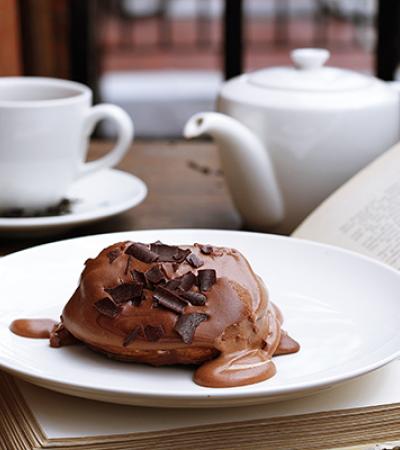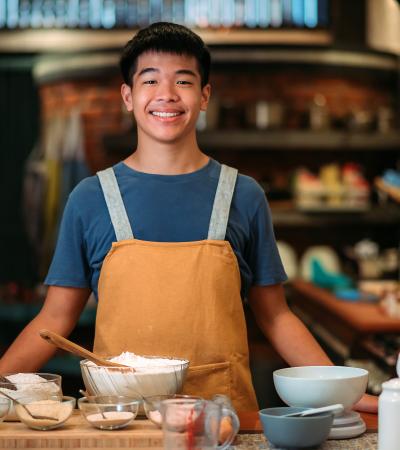Tween Club is a program specifically designed for tweens in fourth grade and up. Each month there is a new activity that invites tweens to come to the library to make things, play games and more. In May 2016, we explored the science of ice cream with a hands-on DIY ice cream activity.
Advanced Planning
The Secret Science of Ice Cream was a program planned as part of our monthly Tween Club for children in the fourth grade and higher. Our goal with Tween Club programs is to engage tweens in hands-on activities, trying to incorporate STEM elements in a fun way whenever possible. From past participation, we know that our audience enjoys food programs and that these programs usually provide a good avenue to model/teach kitchen skills and incorporate information about the science behind the cooking process. Preparation for this particular program took about two weeks as I and another librarian tested recipes, began planning for supply needs and program set-up, and sourcing the science information we wanted to share with our participants. (See recipe, "Tween Club Ice Cream," under Attachments at right.)
Marketing
Marketing for this program, along with our other Tween Club events, included using in-library fliers and posters and messaging on the digital signage screen. It was shared on our online events calendar and a news feature about tween and teen programming. Events were also shared on the library’s social media channels, on local online community calendars, and communicated to schools (teachers and librarians) via email.
Budgeting
We spent approximately $50 on a few sets of measuring spoons and cups and ingredients to make ice cream for about 20 participants. We did not have to purchase other supplies (disposable bowls, spoons, plastic storage bags, etc.) since our library usually purchases these in bulk for use by a number of programs throughout the year. Because our Tween Club programs are drop-in events, there were some ice cream ingredients left over after the program. If you’re able to register participants, it may help you minimize waste and ingredient cost.
Day-of-event Activity
The program required two staff members for about three hours (one hour each for set-up and tear down and one hour for the program itself). We set up three tables with ingredients on each. Additional supplies were kept in the meeting room kitchenette for easy access. Since we don’t have a large enough freezer onsite, one staff member purchased ice just before the program began.
Program Execution
When the tweens arrived, we started with brainstorming about ice cream: what makes a “good” ice cream, why does it float in ice cream soda, what ingredients are needed, etc. After that, we showed them the recipe we would be using and asked what purpose each ingredient served in the recipe (especially the salt in the ice). Participants then moved back to the tables and worked with staff to follow the recipe and make the ice cream base. After the base was made, participants sealed it into plastic storage bags with the ice and salt and began shaking.
As they were shaking, we talked about why they had to shake (churn) the ice cream and what they thought would happen if it wasn’t churned properly. Staff also started some basic clean-up and got out ingredients to turn their ice cream into sundaes once it was ready. Most participants had a nice soft-serve ice cream after about 10 minutes of shaking, but those who hadn’t shaken theirs as much found they had to add additional ice and shake a little longer. We wrapped up the program by having them add sprinkles, chocolate and bananas to make ice cream sundaes.
The program itself was very successful; we had 14 participants plus several parents that stayed to observe. Tweens were engaged with the activity with many enthusiastically showing their parents the finished product, explaining how they made it, and asking to do it again at home.
Advice
For any cooking program with tweens, I encourage you to have a short discussion about kitchen etiquette before starting. Not all tweens are familiar with working in a kitchen, so understanding that they need to respect the equipment (only use it as intended) and their workspace (clean up after themselves) can be key to a successful program. For this program, specifically, I would also recommend purchasing the freezer quality storage bags; anything less is liable to break and leak all over.
Supporting Materials
- Feedback (Coming Soon!)
- Programming Librarian Facebook Group



